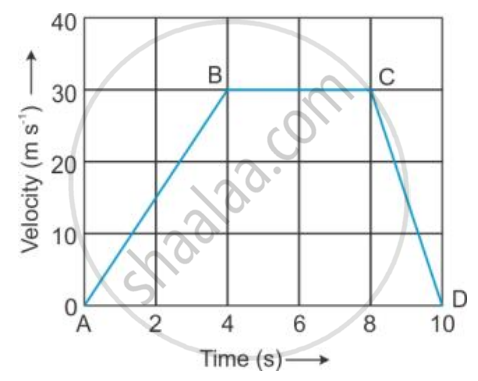Advertisements
Advertisements
Question
A train starting from Railway Station attains a speed of 21 m/s in one minute. Find its acceleration.
Solution
(b) We will find the value of uniform acceleration.
Initial velocity (u) 0 m/s
Final velocity (v) = 21 m/s
Time taken (t) = 60 s
Acceleration :
`a = (v-u)/t`
Putting the values in the above equation , we get :
`a = (21-0)/60`
= `0.35 "m/s"^2`
APPEARS IN
RELATED QUESTIONS
What does the path of an object look like when it is in uniform motion?
Name the physical quantity obtained by dividing ‘Distance travelled’ by ‘Time taken’ to travel that distance.
Convert a speed of 54 km/h into m/s.
The tip of seconds’ hand of a dock takes 60 seconds to move once on the circular dial of the clock. If the radius of the dial of the clock be 10.5 cm, calculate the speed of the tip of the seconds’ hand of the clock. `("Given" π= 22/7)`.
The graph given alongside shows how the speed of a car changes with time:

(i) What is the initial speed of the car ?
(ii) What is the maximum speed attained by the car ?
(iii) Which part of the graph shows zero acceleration ?
(iv) Which part of the graph shows varying retardation ?
(v) Find the distance travelled in first 8 hours.
A bus moving along a straight line at 20 m/s undergoes an acceleration of 4 m/s2. After 2 seconds, its speed will be:
What do you mean by motion in one direction?
The diagram below shows the pattern of the oil on the road at a constant rate from a moving car. What information do you get from it about the motion of the car.

A train takes 2 h to reach station B from station A, and then 3 h to return from station B to station A. The distance between the two stations is 200 km. Find:
The average speed,
The average velocity of the train.
The velocity-time graph of a moving body is given below in Figure

Displacement in each part AB, BC and CD.
